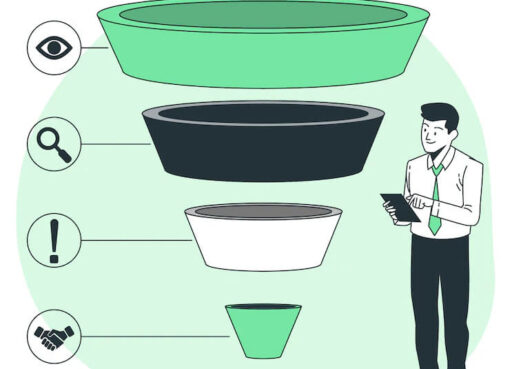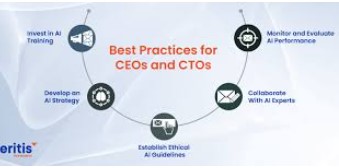The Evolution of Digital Marketing: Then and Now

Digital marketing has come a long way since its early days, transforming from a novel experiment in online promotion to a cornerstone of modern business strategy. The digital landscape has dramatically evolved in terms of tools, platforms, consumer behavior, and marketing strategies. This article explores the fascinating journey of digital marketing—from its humble beginnings to the data-driven, AI-powered ecosystem it is today.
The Birth of Digital Marketing: A Look Back
The roots of digital marketing trace back to the early 1990s, coinciding with the emergence of the internet. The first clickable banner ad, which appeared in 1994 for AT&T, is often considered the official birth of digital marketing. During this era, businesses experimented with digital advertising on rudimentary websites, often focusing more on novelty than strategy.
Key Characteristics of Early Digital Marketing:
- Static, text-heavy websites.
- Email marketing as a primary tool.
- Banner ads with low click-through rates.
- Minimal personalization or user targeting.
- Metrics were limited to basic site visits and impressions.
Marketers had limited data and relied heavily on traditional advertising methods (TV, radio, print) to support their digital efforts. The early digital world was a one-way street—marketers talked, and consumers listened.
The Rise of Search Engines and SEO
The late 1990s and early 2000s marked a significant shift with the advent of search engines like Yahoo!, AltaVista, and eventually Google. These platforms revolutionized how people accessed information and how businesses reached potential customers.
Key Milestones:
- Launch of Google in 1998, which refined search algorithms.
- Emergence of SEO (Search Engine Optimization) as a core digital strategy.
- Development of PPC (Pay-Per-Click) advertising, beginning with Google AdWords in 2000.
SEO gave rise to content-driven marketing, where companies began creating value-rich content tailored to user searches. This era emphasized keyword usage, metadata optimization, and link building.
The Social Media Explosion
The mid-2000s introduced another digital revolution: social media. Platforms like Facebook (2004), YouTube (2005), Twitter (2006), and LinkedIn (2003) began reshaping how people interacted online. These platforms became powerful marketing channels almost overnight.
How Social Media Changed the Game:
- Brands gained the ability to communicate directly with audiences.
- Influencer marketing began to take form.
- User-generated content and social sharing became vital.
- Social ads allowed for hyper-targeted campaigns based on demographics, interests, and behavior.
Marketers now had real-time engagement metrics, and campaigns became more conversational and community-oriented.
The Mobile Revolution and App Marketing
With the rise of smartphones—particularly after the iPhone launch in 2007—mobile internet usage skyrocketed. Digital marketers adapted quickly to tap into this increasingly mobile audience.
Mobile Marketing Developments:
- Responsive website design.
- SMS marketing and mobile apps.
- Geo-targeting and location-based services.
- Mobile advertising via apps and games.
Users began consuming content on-the-go, pushing marketers to adopt a “mobile-first” approach. Mobile optimization became a necessity rather than an option.
Data, Analytics, and Personalization
One of the most transformative elements in modern digital marketing has been the rise of data and analytics. With the growth of tools like Google Analytics, CRM systems, and social media insights, marketers gained access to detailed consumer behavior.
Features of the Data-Driven Era:
- Advanced audience segmentation.
- Behavioral tracking and retargeting.
- Predictive analytics and performance forecasting.
- Real-time campaign optimization.
This shift empowered marketers to deliver personalized experiences, increase ROI, and make data-backed decisions with unparalleled accuracy.
Automation and Artificial Intelligence
In the 2010s and beyond, marketing automation and AI took center stage. Platforms like HubSpot, Mailchimp, and Marketo enabled businesses to automate repetitive tasks such as email campaigns, lead nurturing, and customer onboarding.
AI Innovations in Digital Marketing:
- Chatbots and virtual assistants.
- AI-generated content and copywriting.
- Predictive customer journeys.
- Smart bidding in PPC advertising.
- Voice search optimization.
These technologies significantly reduced the manual workload while enhancing the efficiency and precision of marketing efforts.
Content Marketing and Video Domination
Content became king in the modern digital age. Blogs, infographics, whitepapers, and video content have grown in importance. Video, in particular, has exploded thanks to platforms like YouTube, TikTok, and Instagram Reels.
Current Trends in Content:
- Short-form videos for quick engagement.
- Live streaming for real-time interaction.
- Long-form articles for SEO and thought leadership.
- Interactive content like polls, quizzes, and AR filters.
Content marketing evolved to not just attract attention but to build trust and establish brand authority.
The Role of Ethics, Privacy, and Regulation
As digital marketing matured, so did concerns about privacy, data misuse, and ethics. Regulations like GDPR (General Data Protection Regulation) in Europe and CCPA (California Consumer Privacy Act) in the U.S. have set new standards.
Modern Ethical Considerations:
- Transparent data collection practices.
- Consent-based marketing strategies.
- Responsible AI use.
- Avoiding manipulative or deceptive tactics.
These regulations have forced brands to focus on building trust and long-term customer relationships over short-term gains.
The Present and Future: Omnichannel, XR, and Beyond
Today’s digital marketing landscape is omnichannel—brands engage consumers across email, social media, search, mobile apps, websites, and offline experiences seamlessly. The future is also being shaped by emerging technologies like:
- Extended Reality (XR): Virtual reality (VR) and augmented reality (AR) for immersive experiences.
- Blockchain for transparent advertising.
- Web3 and decentralized platforms.
- Continued AI advancements and ethical machine learning.
Marketers must stay agile, creative, and data-savvy to stay ahead in this rapidly evolving field.
Conclusion: From Static Banners to Intelligent Campaigns
Digital marketing has transitioned from a static, one-way communication channel to an interactive, personalized, and technologically advanced discipline. The journey from banner ads to AI-powered omnichannel experiences reflects not only innovation but also a deeper understanding of human behavior.
As the digital world continues to expand and evolve, one thing remains clear—marketing is no longer just about selling products; it’s about creating meaningful experiences, building trust, and fostering long-term connections in a digital-first world.







Leave a Comment